When your body faces physical stress, it activates a precise sequence of steps to restore function. These natural processes involve coordinated efforts between cells, blood flow, and tissue regeneration. Recent studies, including updated findings from Stephanie Biddell (Registered Physiotherapist, May 2024), highlight how cellular communication drives efficient repair.
Recognizing these biological patterns helps optimize recovery timelines. For example, early-stage inflammation triggers nutrient-rich blood delivery to damaged areas. Later, specialized cells rebuild tissue structure. Missteps during these stages often lead to setbacks, making professional guidance vital.
At Riverside Sports Therapy in Calgary, our team tailors rehab plans to align with your body’s unique rhythm. Whether addressing muscle strains or joint stress, we combine cutting-edge research with hands-on care. Call us at (403)283-7551 to discuss personalized strategies for your recovery journey.
Key Takeaways
- Recovery occurs in distinct biological stages requiring specific care approaches.
- Cellular signaling directs repair processes at microscopic levels.
- Optimal blood circulation supports nutrient delivery during early recovery.
- Custom rehab plans minimize setbacks and accelerate tissue restoration.
- Riverside Sports Therapy offers evidence-based guidance for Calgary residents.
Introduction to Injury Healing and Riverside Sports Therapy
Immediately after trauma, cellular mechanisms kickstart processes to repair affected tissues. This biological response relies on coordinated actions between white blood cells, blood vessels, and localized growth signals. Understanding these interactions helps explain why timely care matters for long-term recovery.
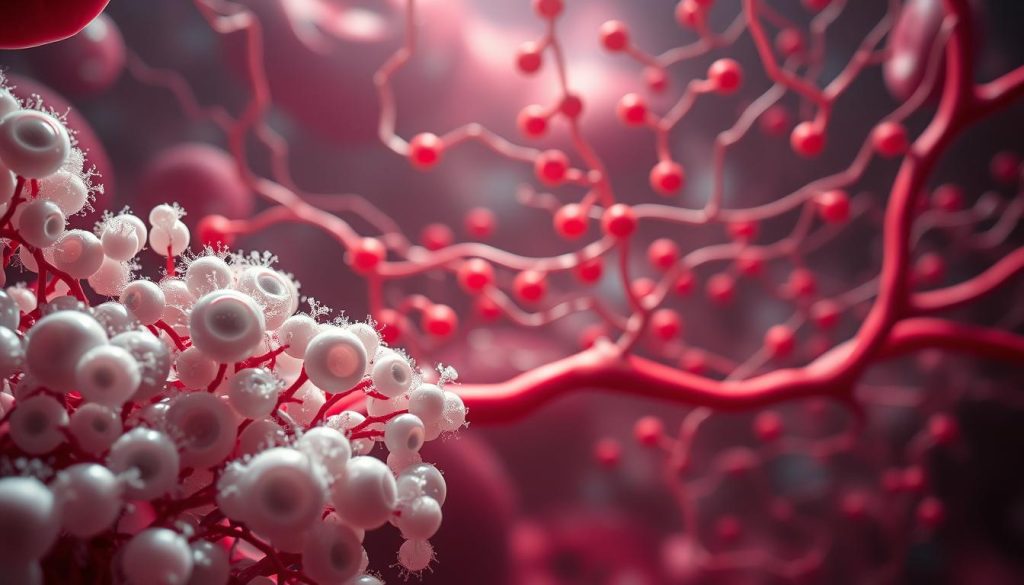
Overview of the Healing Process
Damaged areas trigger rapid changes. Blood vessels widen to increase nutrient-rich fluid flow, while white blood cells swarm the site to clear debris and prevent infection. This “white blood” activity creates a clean foundation for rebuilding.
Simultaneously, specialized proteins stimulate new tissue formation. Growth factors guide collagen production, strengthening structures over weeks. Without proper support, this phase can stall—leading to chronic stiffness or weakness.
About Riverside Sports Therapy in Calgary
Riverside Sports Therapy combines advanced techniques with patient education. Their Calgary-based team designs rehab plans matching each body’s repair timeline. From acute strains to post-surgical care, they prioritize measurable progress.
“Recovery isn’t just time passing—it’s strategic intervention,” notes lead therapist Stephanie Biddell. By aligning treatments with natural biological rhythms, they reduce setbacks and restore mobility faster. Call (403)283-7551 to explore science-backed solutions tailored to your needs.
Fundamentals of the Four Stages of Healing
Your body orchestrates repair through interconnected biological events. These stages work like a relay race—each phase prepares the ground for the next while maintaining momentum. Disruptions in this sequence often prolong recovery timelines.
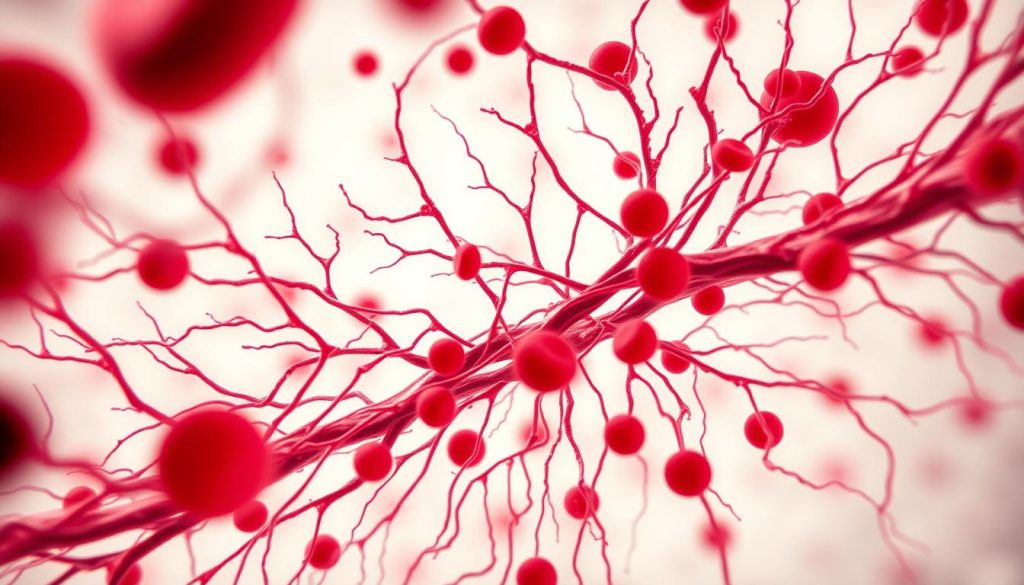
Bleeding and Inflammation Stage
Within minutes of damage, blood cells rush to the site. Platelets form clots to stop bleeding, creating a temporary shield. This phase also releases inflammatory factors that act as chemical alarms, summoning immune responders.
Though swelling may seem problematic, it’s essential. Fluid buildup delivers oxygen and nutrients while isolating the area. Think of it as nature’s first aid kit—messy but purposeful.
Proliferation and Remodeling Stage
Days later, fibroblasts weave collagen fibers across the site. This creates a provisional scar that stabilizes the region. Over weeks, these fibers reorganize along stress lines, boosting tensile strength.
However, excessive scar tissue can limit flexibility. Genetic factors or poor circulation heighten this risk. Professional guidance ensures balanced tissue regeneration without overcompensation.
While stages appear separate, they overlap seamlessly. Blood vessels rebuild as inflammation subsides, proving recovery is a symphony—not a solo act.
injury healing phases explained: A Comprehensive Guide
Repairing damaged areas follows a precise biological timeline, from initial clotting to long-term tissue refinement. While the body’s systems work tirelessly, factors like low oxygen levels or chronic conditions can disrupt this rhythm. Understanding these risks helps prevent setbacks.
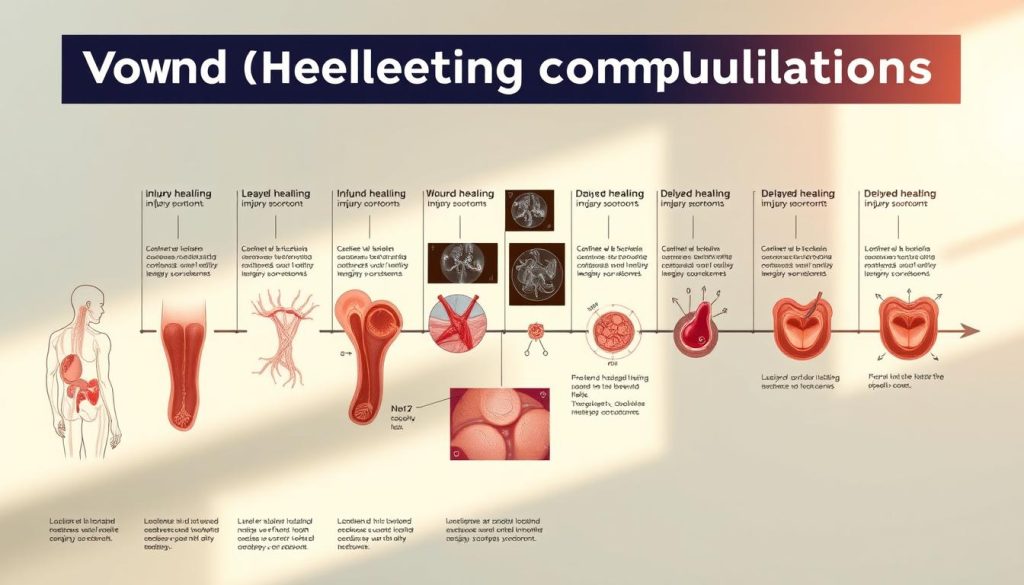
- Blood flow to the site is restricted, starving cells of nutrients
- Excessive scar tissue forms, limiting mobility
- Underlying health issues slow cellular repair
Optimal wound healing requires balanced oxygen delivery. This gas fuels collagen synthesis—the protein scaffolding for new tissue. Without it, repairs stall, extending timelines from weeks to years in severe cases.
| Stage | Duration | Key Process |
|---|---|---|
| Initial Repair | Days to 3 Weeks | Clot formation & inflammation |
| Tissue Growth | 3-6 Weeks | Collagen deposition |
| Maturation | 3 Months – 2 Years | Scar remodeling |
Managing each phase reduces complications. For example, controlled movement during tissue growth prevents re-injury while promoting alignment. As Stephanie Biddell notes, “Timing interventions to match biological milestones is 80% of successful recovery.”
Whether addressing fresh injuries or chronic wound healing challenges, aligning care with these milestones ensures efficient recovery. Riverside Sports Therapy’s Calgary team specializes in such personalized strategies.
Cellular and Blood Mechanisms Behind Tissue Repair
At the microscopic level, your body deploys specialized teams to rebuild damaged areas. Platelets arrive first, releasing sticky proteins to seal breaks. White blood cells follow, acting as cleanup crews that remove debris and combat pathogens. This cellular teamwork ensures a stable foundation for lasting repairs.
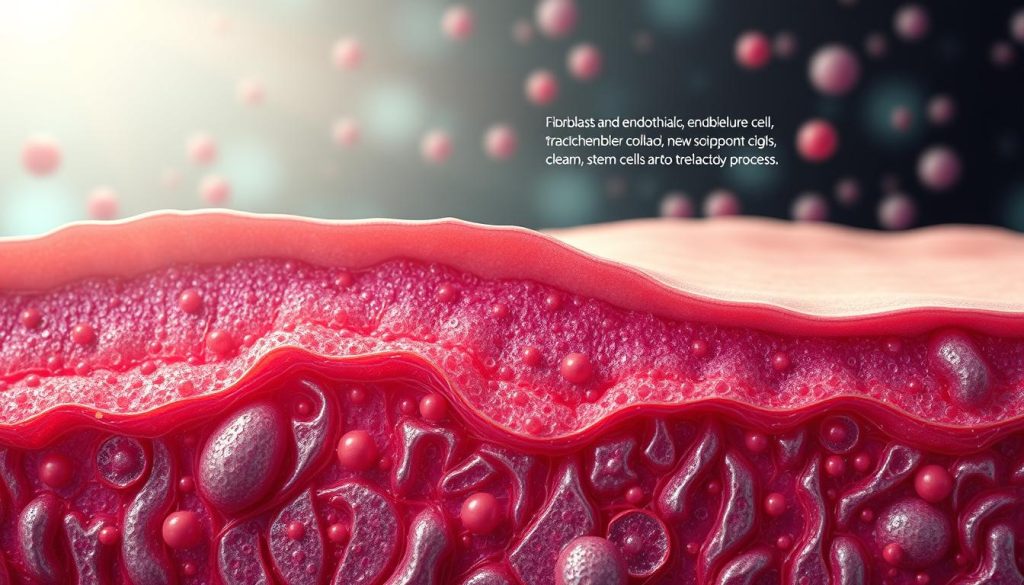
Role of White Blood Cells and Platelets
Platelets do more than stop bleeding. They release growth factors that signal fibroblasts to begin rebuilding. White blood cells, like neutrophils and macrophages, engulf harmful bacteria—reducing infection risks. Recent studies show these cells also regulate inflammation, preventing excessive swelling.
For example, macrophages shift from pro-inflammatory to anti-inflammatory roles during later phases. This adaptability ensures the process stays on track. Without this balance, chronic inflammation can delay wound closure.
Importance of Blood Vessels and Oxygen Flow
New blood vessels form through angiogenesis, delivering oxygen and nutrients to repair sites. Blood flow peaks during the proliferation phase, fueling collagen production. Oxygen-rich environments also help skin cells regenerate with proper texture and flexibility.
Poor circulation starves tissues, leading to fragile scars or non-healing wounds. “Every minute, your capillaries transport resources critical for repair,” explains Stephanie Biddell. Targeted exercises and therapies optimize this delivery system, accelerating the process.
| Component | Function | Impact on Repair |
|---|---|---|
| Platelets | Clot formation & growth factor release | Initiate rebuilding signals |
| White Blood Cells | Pathogen removal & inflammation control | Prevent infection |
| Capillaries | Oxygen/nutrient delivery | Support collagen synthesis |
Risk Factors That Affect the Healing Process
Multiple factors influence how quickly and effectively the body repairs itself after damage. Inherent traits like age and genetics interact with lifestyle choices, creating unique challenges during recovery. Recognizing these variables early helps design targeted strategies for optimal results.

Impact of Age and Genetic Factors
Aging slows cell regeneration as tissues lose elasticity. Collagen production drops by 1% yearly after 30, weakening structural support. Genetic mutations may also disrupt signaling proteins, delaying key stages like inflammation resolution.
Lifestyle and Metabolic Considerations
Smoking reduces blood flow, starving cells of oxygen needed for collagen synthesis. Diabetes elevates blood sugar, stiffening arteries and impairing tissue repair. Chronic stress or poor nutrition further starve recovery processes.
Persistent pain often signals mismanaged inflammation or compromised healing. “Ignoring these warnings risks chronic issues,” notes Calgary physiotherapist Stephanie Biddell. Custom rehab programs address individual risks—like mobility exercises for diabetics or anti-inflammatory diets for seniors.
Early intervention transforms outcomes. Addressing genetic predispositions or metabolic imbalances ensures each stage progresses smoothly. With tailored care, even complex cases achieve functional recovery.
Rehabilitation and Targeted Treatment Strategies
Recovering from physical damage demands more than rest—it requires precision-guided strategies. At Riverside Sports Therapy in Calgary, experts craft treatment plans matching each patient’s biological clock. Proper time management ensures interventions align with tissue readiness, avoiding setbacks.

Personalized Rehab Programs in Calgary
Early-stage care focuses on controlling bleeding and inflammation. Compression or cryotherapy reduces swelling, while gentle movements maintain joint mobility. Post-surgery protocols prioritize scar flexibility through gradual stretching. “Starting exercises too soon risks re-injury, but delaying wastes critical time,” explains Stephanie Biddell.
| Recovery Stage | Treatment Focus | Tools Used |
|---|---|---|
| Acute (0-72 hrs) | Pain/swelling control | Ice, compression sleeves |
| Subacute (3-21 days) | Tissue strengthening | Therabands, low-load exercises |
| Chronic (>3 weeks) | Functional restoration | Weight training, sport-specific drills |
Effective Pain Management and Mobility Aids
Underlying conditions like arthritis require modified approaches. Custom orthotics or braces redistribute pressure during walking. Electrical stimulation devices ease muscle spasms without medications.
- Adjustable crutches for weight-bearing control
- TENS units for nerve-related discomfort
- Heat wraps to improve circulation pre-exercise
Riverside’s team evaluates progress weekly, adapting treatment intensity as tissues strengthen. Call (403)283-7551 to schedule a Calgary consultation aligning care with your recovery rhythm.
Emerging Research and Innovations in Injury Healing
Recent breakthroughs are reshaping how we approach recovery science. Advanced imaging and molecular studies reveal hidden details about how biological systems coordinate repairs. These discoveries help clinicians predict outcomes and personalize treatments.
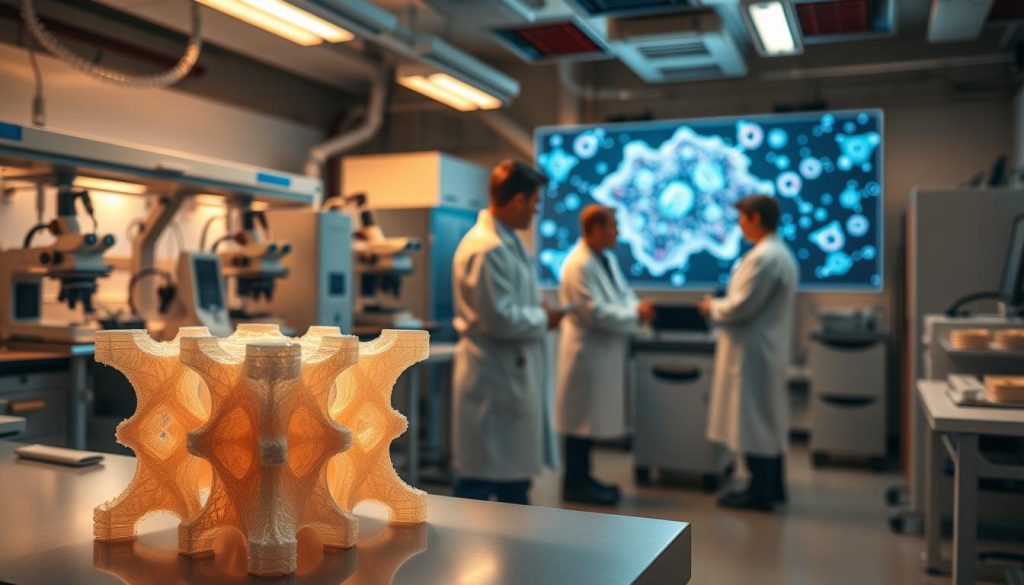
Advancements in Collagen and Tissue Remodeling
Scientists now understand how clotting initiates structured rebuilding. Fibrin—a protein mesh formed during bleeding—acts as scaffolding for new collagen. This network guides cells to align fibers along natural stress lines, reducing weak spots.
However, conditions like diabetes degrade fibrin quality. High blood sugar creates brittle networks that hinder tissue strength. New therapies aim to stabilize these structures using bioengineered materials.
Leveraging New Growth Factors for Recovery
Researchers are mapping how growth factors interact with the body’s repair system. For example, PDGF-BB accelerates flow restoration in damaged capillaries. Combined with vibration therapy, it enhances nutrient delivery to starved tissues.
- Fibrin-targeted drug delivery for precise scar management
- Smart wearables that monitor local blood flow in real time
- Gene editing to boost cellular responses in slow-healing cases
These innovations highlight the healing process as a dynamic collaboration between biology and technology. As Stephanie Biddell notes, “We’re not just supporting recovery—we’re upgrading its blueprint.”
For Calgary residents, such advancements mean shorter rehab timelines and fewer complications. Riverside Sports Therapy integrates these findings into cutting-edge care plans tailored to individual needs.
Conclusion
Effective recovery hinges on respecting the body’s natural repair timeline. Initial steps like clotting and inflammation lay the groundwork, while later stages focus on rebuilding collagen networks. Growth factors act as biological conductors, directing cells to strengthen weakened areas. Ignoring these steps risks complications like stiff scars or prolonged discomfort.
Proper wound care ensures each phase progresses smoothly. This includes monitoring blood flow, managing inflammation, and avoiding premature strain. Advanced therapies now leverage growth factors to accelerate tissue renewal—a strategy Riverside Sports Therapy integrates into personalized plans.
For Calgary residents, expert guidance transforms recovery outcomes. The clinic’s evidence-based approach addresses individual needs, from acute strains to chronic wound care challenges. Call (403)283-7551 today to align your rehab journey with proven biological principles. Let Riverside’s team optimize your path to restored mobility.
